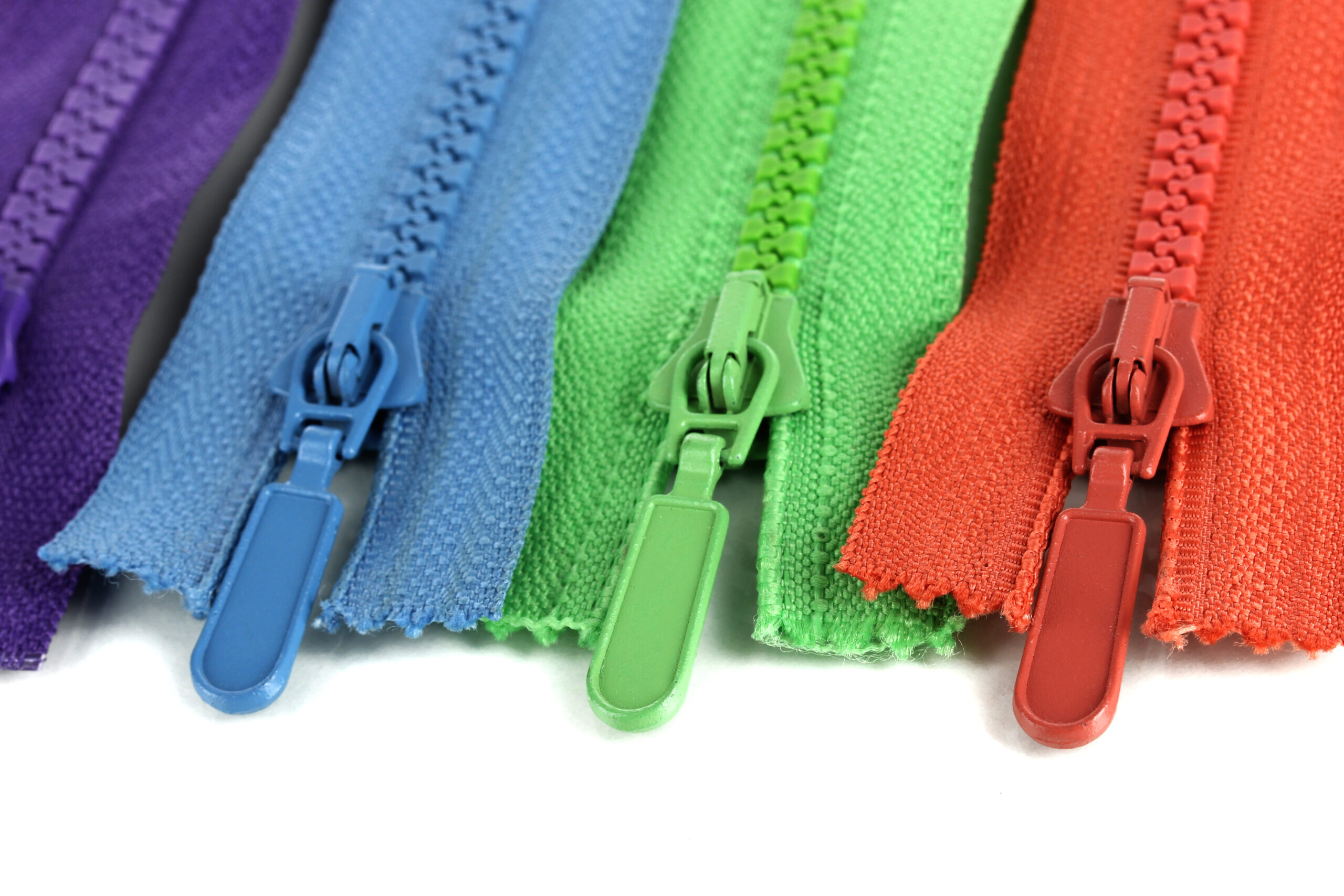Sunlight is one of the most powerful and persistent environmental forces acting on outdoor products. From boat covers and industrial tents to outdoor gear and modular enclosures, UV radiation silently degrades materials over time. While engineers often consider abrasion, saltwater, and temperature extremes, ultraviolet exposure remains one of the most overlooked causes of zipper deterioration and outdoor zipper durability loss.
Prolonged sunlight weakens zipper tapes, cracks coatings, and fades colors. It also affects polymer flexibility and the functionality of sliders and teeth. Without UV protection, a closure can lose performance long before mechanical wear occurs — shortening the lifespan of the entire product it secures.
Since 1946, LenZip has specialized in engineering UV-resistant zippers that maintain color, flexibility, and integrity through seasons of direct sunlight and environmental stress. As a U.S.-based manufacturer with deep expertise in coatings and material testing, LenZip collaborates with OEMs and marine fabricators to design closure systems that last longer under the toughest outdoor conditions.

The Science of UV Degradation
Ultraviolet radiation disrupts molecular bonds within polymers and coatings through photo-oxidation. When UV photons strike the molecular chains of synthetic fibers such as nylon or polyester, they break chemical bonds, forming free radicals that react with oxygen. This cycle leads to embrittlement, discoloration, and surface cracking — the hallmarks of UV degradation.
Different polymers respond differently to these forces. Nylon, commonly used for flexibility and resilience, tends to absorb more UV energy, accelerating oxidation. Polyester, by contrast, contains aromatic rings in its molecular structure that naturally resist UV degradation. Polypropylene starts out resistant but becomes brittle with age under continuous UV exposure and heat cycling.
The Industrial Fabrics Association International (IFAI) has documented how long-term sunlight exposure reduces tensile strength in textile polymers. In practice, zipper tapes exposed to sustained UV begin to “chalk” — forming a powdery surface. This is a visible sign of polymer oxidation and weakening. Metal or molded sliders may also expand or harden under heat, leading to binding or mechanical stiffness.
When engineers understand this degradation mechanism, they can apply proper stabilizers, reflective coatings, and material pairings to extend the performance window of UV-protected industrial zippers.
How UV Exposure Shortens Zipper Lifespan
Outdoor and marine zippers endure simultaneous stresses: UV light, humidity, and fluctuating temperatures. Over time, these factors compound material fatigue.
Loss of tensile strength is one of the earliest effects of UV exposure. As fibers break down, zipper tapes lose their ability to carry load, making teeth prone to separation under stress. Coatings that were once flexible become brittle, eventually cracking when bent or pulled. Color degradation follows, and the zipper may fade unevenly — a sign that protective pigments or additives have been depleted.
Mechanical components also suffer. Sliders can seize as polymer parts warp under prolonged heat, or as lubricating finishes evaporate. In extreme sunlight combined with saltwater, unprotected zippers may lose up to half their functional strength within a single high-exposure season.
Consider marine covers, which sit under harsh coastal conditions. A standard nylon zipper often fades and cracks within months, while a UV-stabilized alternative from LenZip retains flexibility and color for multiple seasons. Similarly, tent systems and industrial tarps benefit from UV shielding that prevents tape embrittlement and detachment.
For more specific insights into marine performance and longevity, visit The Future of Marine Zippers. Practical care and inspection can also extend use; see Zipper Maintenance & Care.
Comparing Material Resistance
Choosing the right base polymer is essential to combat UV degradation. Each common zipper tape material — nylon, polyester, and polypropylene — behaves differently when exposed to sunlight, heat, and moisture.
Unraveling the Differences: Nylon and Polyester Explained and Polypropylene vs. Polyester detail how these differences influence strength and longevity. These insights guide the selection of zipper assemblies meant for tents, marine applications, or industrial covers.
Material UV Performance Overview:
- Nylon: Highly flexible and strong, but degrades faster in UV without stabilizers; best used when coated or laminated.
- Polyester: Superior UV resistance, retaining color and tensile strength longer than other synthetic fibers.
- Polypropylene: Excellent chemical resistance and moderate UV protection initially, but prone to embrittlement in extended sunlight exposure without additives.
For applications demanding both marine durability and UV stability, polyester and UV-stabilized nylon tapes are typically preferred. Nylon vs. Polypropylene for Marine and More offers additional comparison guidance.

The Role of Coatings and Finishes
Coatings are the frontline defense against UV degradation. By forming a protective barrier over tape and metal surfaces, coatings block radiation and prevent the oxidative reactions that weaken polymers.
Modern additive systems employ UV absorbers and stabilizers, which act like sunscreen for textile materials. These compounds absorb high-energy UV photons and safely dissipate them as heat, stopping molecular breakdown. Reflective or pigment-dense finishes further improve resistance by scattering light, enhancing both protection and color retention.
LenZip’s Zipper Materials & Finishes and Zipper Coatings and Finishes outline how the company integrates polyurethane, fluoropolymer, and pigment-based systems into outdoor zipper assemblies.
Polyurethane (PU) coatings block UV light while providing excellent abrasion resistance, making them ideal for tents, marine covers, and outdoor gear. Fluoropolymer finishes reflect UV radiation and repel water, preventing surface buildup and discoloration. Pigment-dense coatings use light-blocking particles to minimize fading, while UV-stabilized tape finishes maintain fiber flexibility and prevent premature cracking.
Studies featured in Textile World and ScienceDirect show that multi-layer coatings combining reflective and absorbent additives can extend fabric and zipper life by more than 50% in accelerated UV tests — a benchmark LenZip routinely matches through proprietary coating formulations.
Suggested Image: “Side-by-side comparison of UV-degraded and UV-protected zipper tape under sunlight exposure.”
Alt Text: “Comparison of UV-degraded and UV-protected zipper tape materials.”
Environmental and Application Factors
The effectiveness of UV resistance depends on environmental context. Zippers on marine fabrics face a convergence of salt, humidity, and sun that accelerate oxidative wear. Desert environments add intense heat and low humidity that drive out plasticizers, making tapes stiff and prone to cracking.
Conversely, industrial and polar regions combine UV exposure with cold cycles that embrittle unprotected polymers. Selecting the proper material-coating combination requires understanding these regional interactions.
Outdoor zippers used in modular structures or temporary shelters must tolerate varied conditions — from blazing sun to cool nights — without losing functional smoothness. The resource Zippers and Extreme Environments explains how LenZip tailors assemblies for combined thermal and UV durability. Designers creating large modular canopies or containment enclosures can also explore The Role of Zippers in Modular and Temporary Structures for configuration guidance.
Each environment demands a specialized formulation of fabric base, slider alloy, and finish system to ensure consistent closure performance.
Testing for UV Durability
UV protection claims are only as good as the testing that proves them. LenZip’s Zipper Testing Standards detail the controlled methods used to quantify exposure performance.
Industry testing relies on well-established standards:
- ASTM G154: Accelerated UV exposure using fluorescent UV lamps simulating sunlight.
- ASTM D6775: Testing the tensile strength and elongation of zipper tapes after aging.
- Colorfastness and gloss retention tests: Simulate months of outdoor weathering in controlled chambers.
LenZip conducts all UV and environmental testing in-house under tightly monitored conditions. Samples are subjected to cycles of UV radiation, heat, and moisture to simulate real-world field exposure. After defined exposure hours, engineers measure tensile retention, color stability, and coating adhesion.
Detailed documentation accompanies every production batch, affirming traceability and performance assurance — a commitment often absent in offshore manufacturing. See ASTM International for additional testing references used industry-wide.

Why Choose LenZip
Since its founding in 1946, LenZip has remained one of the few U.S.-made zipper manufacturers with in-house coating, assembly, and testing capabilities. Every zipper designed for outdoor or marine use is built under strict material controls and validated through exposure testing.
Domestic production provides not only consistency but also innovation agility. With direct engineering input, LenZip develops closures that adapt to emerging UV stabilization technologies and high-performance fabrics. Its heritage of quality and accountability stands behind every assembly shipped.
The company’s About Us page details its family-owned legacy and continuous focus on technical manufacturing excellence. OEMs and product engineers can begin specifications through Request a Quote for custom UV-resistant solutions — including experimental coatings, reflective finishes, and hybrid tape constructions.
By combining American-made craftsmanship with material science precision, LenZip delivers outdoor zippers that last longer, stay stronger, and resist fading where imported alternatives fail.
Conclusion
Sunlight exposure is not a cosmetic issue — it’s a performance challenge that directly affects zipper reliability. Over time, unprotected materials fracture, fade, and lose strength. Incorporating UV-resistant materials, coatings, and testing protocols ensures a product’s integrity through years of outdoor service.
UV-resistant zippers from LenZip embody this approach: engineered durability, tested protection, and American-made consistency. With proper material pairing and validated finishes, outdoor closures can maintain performance and appearance far beyond standard expectations.
Learn more about the protective technologies behind LenZip’s UV-resistant assemblies at Zipper Coatings and Finishes.
Frequently Asked Questions
How does UV light damage zippers?
UV radiation breaks down molecular bonds within synthetic fibers and coatings, leading to weakening, fading, and cracking. This process — known as photo-oxidation — accelerates with exposure time and intensity.
Which materials are best for outdoor zipper applications?
Polyester offers the best inherent UV resistance, while UV-stabilized nylon and coated polypropylene perform well when properly formulated. Coatings and finishes further enhance durability for outdoor use.
What coatings improve UV resistance?
Polyurethane, fluoropolymer, and pigment-dense coatings protect by reflecting or absorbing UV radiation and preserving color. LenZip uses proprietary finishes designed for long-term sunlight exposure.
How does LenZip test UV durability?
LenZip simulates long-term outdoor exposure using ASTM G154 UV chambers, tensile testing, and colorfastness analysis. Each assembly’s performance is validated for strength and aesthetic retention.
Can UV-resistant zippers be customized?
Yes. LenZip develops custom zipper assemblies with specific tape materials, slider configurations, and finish systems based on the environmental demands of each application.
Are all outdoor zippers naturally UV-protected?
No. Many standard zippers lack stabilizers or coatings. True UV-resistant zippers require additive protection and tested coatings to endure consistent sunlight exposure over time.
